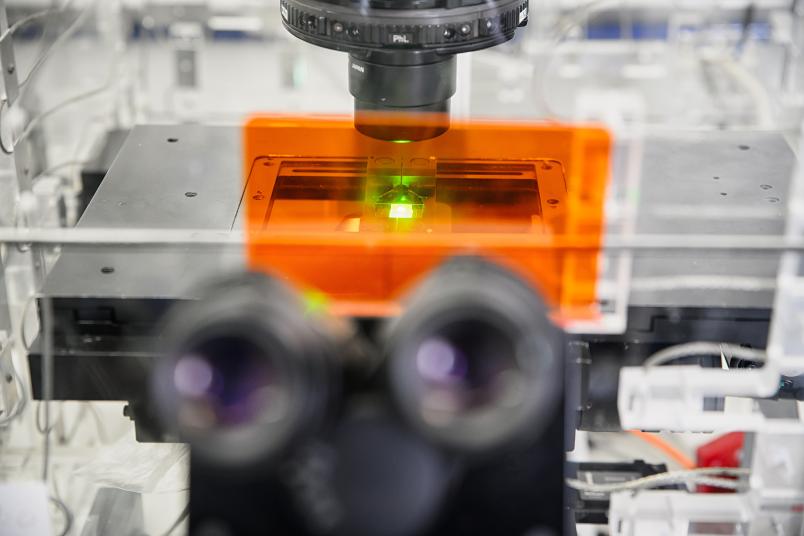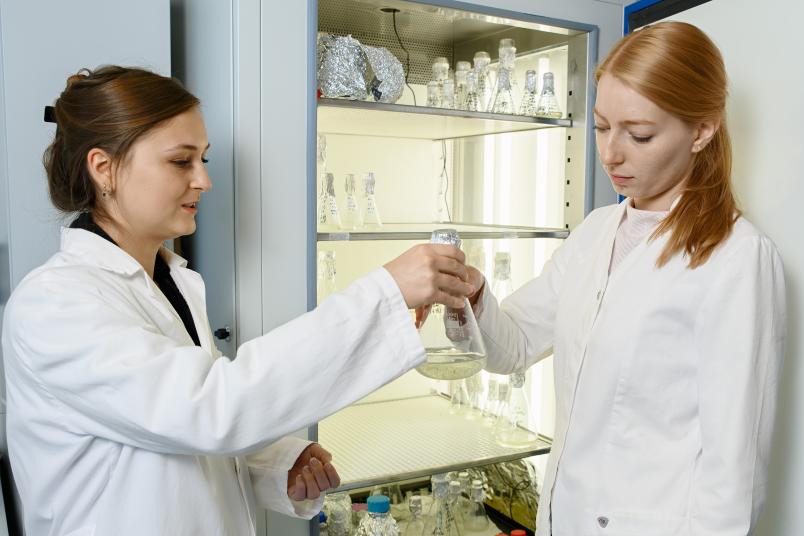Chemistry
Ship Hulls with Limited Liability
How do you stop marine organisms from colonizing a tanker? Creative answers are needed to solve this problem, such as from the field of chemistry.
What does a tanker care if barnacles colonize it? Well, given the gigantic dimensions of such ships, you would think: nothing at all. “However, the colonization of ship surfaces by marine organisms is a huge problem,” says Professor Axel Rosenhahn. “It’s been calculated that they increase the flow resistance so much that the ship’s fuel consumption increases by up to 60 percent.” Not to mention CO2 emissions. This is why the head of the Biointerfaces research group at the Faculty of Chemistry and Biochemistry at Ruhr University Bochum, Germany, has set out to make life on the ship’s hull as uncomfortable as possible.

This idea is not new, of course. Algae, bacteria, mussels and barnacles have accompanied ships since time immemorial. “In the past, they were kept at bay with biocidal coatings,” says Axel Rosenhahn. The active ingredient tributyltin was particularly popular: a broad-spectrum biocide that, when released slowly, killed off anything that tried to colonize the surface of the ship. However, it then turned out that the active ingredient acts like a hormone and accumulates in fish, thus entering the food chain. “Tributyltin therefore disappeared from the market in the early 2000s,” says Axel Rosenhahn. “Attempts were then made to find less toxic methods to prevent biofouling on ships.” It is true that coatings still exist that release toxic substances, such as copper, which also occurs in nature. But the introduction of strict regulations in many ports means that the use of such coatings is on the decline.
Water rinses off biofouling
What’s needed are alternatives – and when coming up with ideas, the sky’s the limit. Rosenhahn’s research group relies on biofouling release technology. The aim is not so much to stop living organisms from attaching themselves to the ship in the first place, but to weaken their grip. In that case, they will simply be rinsed off by the flow of water as the ship travels.
“The problem is that it’s not just one species that sticks to the ship, but a whole community of different organisms, each with their own specialization,” explains Axel Rosenhahn. The candidates include various bacteria and diatoms, for example. Both form biofilms and hide inside. Algae, barnacles and mussels are the largest species that make their home on ship hulls. “For a while, people thought that some of them came first and prepared the ground for the others,” says Axel Rosenhahn. “But that’s not the case. Each species arrives separately and attaches itself in its own unique way.”
Different forms of attachment
Many bacteria and algae secrete a gel-like matrix that first dries out the substrate and then sticks to it. “It’s a fascinating technique that has developed over the course of evolution,” says Rosenhahn, “considering how difficult it is to get anything to stick under water.”

In their larval stage, larger sea creatures such as barnacles move around in search of a place where they can settle. Their metamorphosis only begins once they have attached themselves. “Once this process has started, it can no longer be reversed – which means there’s definitely a risk involved in choosing the right spot,” explains Rosenhahn. “We observe that the barnacle larvae first test the location of their choice by walking over the surface and testing the grip. They walk on two legs, so-called antennae, which are covered with tiny hairs, similar to those of a gecko. Depending on the nature of the surface, the feet come off more or less easily; this is also what they test to determine whether they will stick.”
NO deters bacteria
To make life as difficult as possible for these attachment specialists, Rosenhahn’s team relies on polymers in a wide variety of thicknesses, shapes and compositions. “You want the surface to be as slippery as possible,” he explains. “Preferably a little bit fluffy – but not too thick, of course.” Tests with hydrogels such as those in baby diapers failed, because fine sand particles from the seawater clump everything together. In general, a thickness of around 130 micrometers must not be exceeded for a marine coating: Otherwise the coating would simply be too expensive.
The researcher is currently taking a particular interest in hybrid polymers made from natural sugar compounds and so-called silanes as cross-linking units. They are compact and form thin layers, are themselves highly inert and easy to clean. They can also be additionally equipped with amino functionalities so that they release nitrogen monoxide (NO). NO is a naturally occurring molecule that is released by, for example, bacteria when their habitat doesn’t meet all their needs so that they come under stress and the biofilm dissolves. “NO acts as a kind of messenger for bacteria not to settle here,” explains Axel Rosenhahn.

Another strategy is to incorporate molecules with two simultaneous charges – so-called zwitterions – into the coating. They bind water particularly well and make it more difficult for the surface to dry out, which in turn makes it more difficult for organisms to stick to it.
In its labs, the research group is conducting tests with various coatings of this type and specifically cultivated bacteria and diatoms. In order to mimic marine conditions as closely as possible, the potential colonizers are always released onto the coated surfaces in moving water and, for the sake of comparison, onto uncoated surfaces as well. After a set interval, the researchers count the number of bacteria respectively algae adhering to the samples under the microscope. If there are significantly fewer on a coating than on the control, i.e. if it proves itself to be effective in the lab, tests are carried out on rotating disks in the sea.
“Our aim is for such a coating to retain its functionality for around seven years before it needs to be renewed,” says Axel Rosenhahn. “More frequent dry docking times would be too expensive.”



